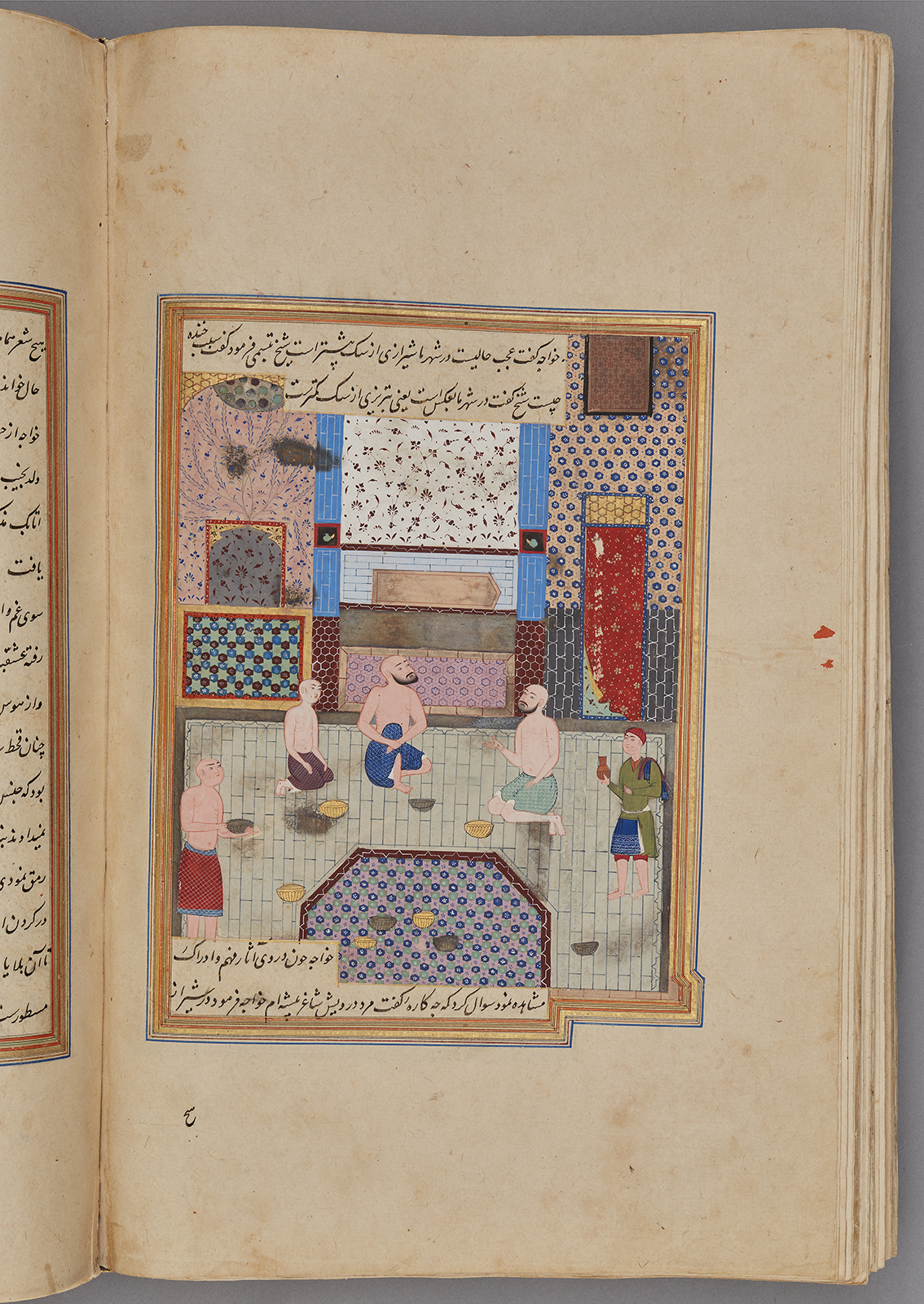Click on the image to zoom
Khwaja Humam from Tabriz and Shirazi Sheikh in the bath, Folio from a manuscript of Nigaristan
- Accession Number:AKM272.f168v
- Creator:Author: Ahmad b. Muhammad Ghaffari, Persian, died 1567 Scribe: Ahmad al-Shirazi
- Place:Iran, Shiraz (probably)
- Dimensions:38.7 cm × 25 cm × 6.4 cm
- Date:1573-74 CE/980 AH/AH 980
- Materials and Technique:Ink, opaque watercolour, and gold on paper
The miniature painting "Khwaja Humam from Tabriz and Shirazi Sheikh in the bath" is from an intact manuscript of Kitab-i Nigaristan, a collection of anecdotes and historical incidents written in prose by the historian and scholar Ahmad Muhammad Ghaffari (1504–1567/68) of Kashan in 1551–2. This illustrated manuscript, dated 1573, was probably produced in a Shiraz workshop.
See AKM272 for more information about the manuscript and links to the other illustrations.
Further Reading
This miniature illustrates an interior of a bathhouse, featuring a tiled wall in the background, a blue iwan (covered by the text box), and an octagonal basin, which is drawn flat.
Around the basin, three men sit on the floor with their heads and upper bodies exposed. They have a bowl of water in front of them, which is used for washing. Two more men stand on either side of the basin. The person on the left seems to be a bath attendant (according to his clothing), and is presumably there to wash and massage the guests.
According to the text, an encounter takes place between the famous poet Khwaja Humam from Tabriz and a Sufi sheikh in a public bath. After exchanging some words, Khwaja provokes the Sufi, and he realizes he has been recognized when the Sufi quotes one of Khwaja’s own poems. This gesture touches Khwaja to such an extent that he introduces his son to the Sufi—a rare action for Khwaja.
Scenes of public Hammams (bathhouses) became popular in the first half of the 16th century in Shiraz. Many illustrations of famous texts such as the Shahnameh, Zafarnameh and the works of Jami and Saʿdi contain a bathhouse scene, and they follow the same formula: illustrating a tiled room, often with a water fountain in the middle of the room and niches in the walls.
- Elika Palenzona-Djalili
Note: This online resource is reviewed and updated on an ongoing basis. We are committed to improving this information and will revise and update knowledge about this object as it becomes available.


